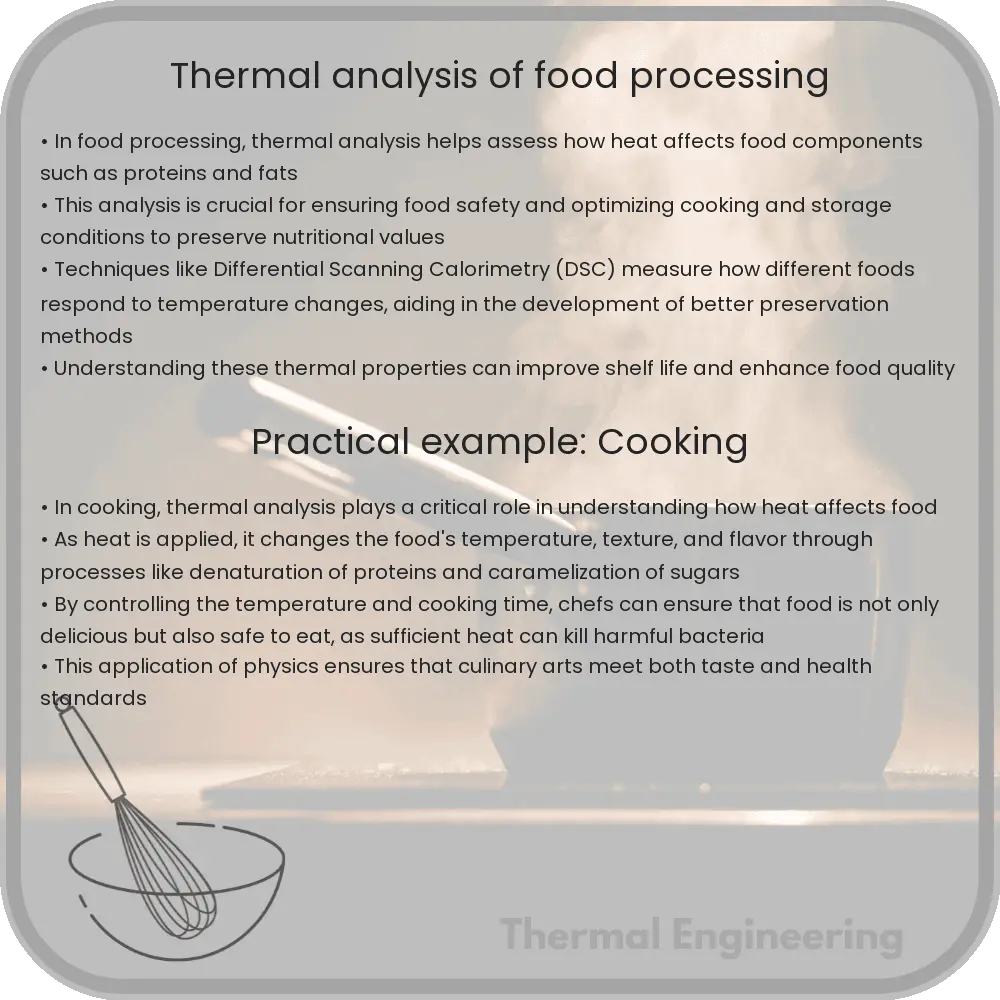Thermal analysis in food processing examines how heat affects food’s safety, quality, and shelf life by studying physical and chemical property changes at varying temperatures.

Understanding Thermal Analysis in Food Processing
Thermal analysis in food processing is a critical aspect of engineering that focuses on understanding how heat treatment affects the safety, quality, and shelf life of food products. This type of analysis employs various techniques to measure changes in physical and chemical properties of food substances as they are subjected to different temperatures. In this article, we’ll explore the principles of thermal analysis, methods used, and its importance in maintaining food safety and quality.
Basic Principles of Thermal Analysis
At its core, thermal analysis in food processing investigates how heat transfers within food products and how this affects various attributes such as texture, color, nutritional content, and microbial load. The key principle underlying thermal analysis is the heat transfer equation, which can be expressed in its simplest form as:
q = m * c * ΔT
Where:
- q represents the heat added or removed (in joules or calories),
- m is the mass of the food item (in grams or kilograms),
- c denotes the specific heat capacity of the food (J/g°C), and
- ΔT is the change in temperature (°C).
Understanding this equation helps engineers design effective food processing systems that can control the amount of heat delivered or removed during processes such as cooking, freezing, or drying.
Methods of Thermal Analysis
- Differential Scanning Calorimetry (DSC): DSC measures the amount of heat required to increase the temperature of a food sample as compared to a reference. This method is particularly useful for detecting phase changes like melting or crystallization.
- Thermogravimetric Analysis (TGA): TGA measures changes in the mass of a food sample as it is heated or cooled. This can provide insights into moisture loss, decomposition, or oxidative stability.
- Thermal Conductivity: This method determines how well heat is transmitted through a food product, which affects cooling and heating rates during processing.
Importance of Thermal Analysis in Food Safety and Quality
Thermal analysis is integral to ensuring that food processing methods achieve the necessary microbial inactivation while maintaining nutrient integrity and sensory qualities. For instance, the precise calculation of heating times and temperatures can prevent the overcooking of foods, preserving vitamins and minerals that are sensitive to heat.
Moreover, thermal analysis aids in developing sterilization and pasteurization protocols. By determining the specific heat treatment required to destroy pathogens while minimizing quality degradation, food engineers can ensure the safety and efficacy of food preservation methods.
Applications of Thermal Analysis in Industry
In the food industry, thermal analysis is used in various applications, such as:
- Developing new products: Understanding thermal properties helps in formulating recipes that can withstand processing temperatures while delivering on taste and texture.
- Improving existing processes: By analyzing how heat affects different food components, engineers can optimize heating and cooling cycles to enhance efficiency and reduce energy costs.
- Shelf life testing: Simulating how products respond to fluctuating storage temperatures helps predict shelf life based on how quickly they degrade.
In conclusion, thermal analysis plays a pivotal role in the engineering aspects of food processing. By deepening our understanding of heat effects on food, engineers are better equipped to design processes that enhance safety, efficiency, and product quality.